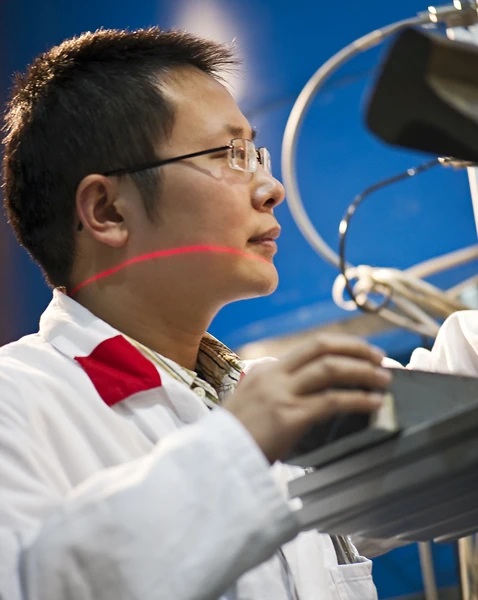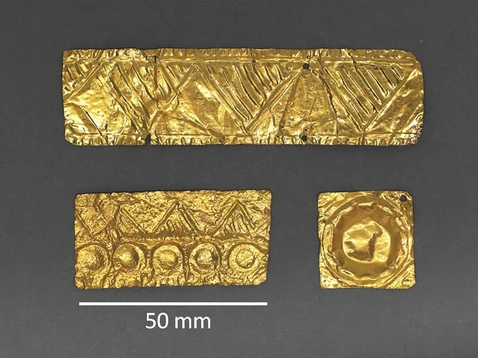Probing the past with neutrons
Aktuell, Wissenschaft, STRESS-SPEC |

A team of researchers led by Dr Weimin Gan from the Helmholtz-Zentrum Hereon and Dr Michael Hofmann from the FRM II has used neutrons at the neutron diffractometer STRESS-SPEC at the MLZ to examine Celtic iron tools and Bronze Age gold artefacts from the Archaeological State Collection in order to obtain complementary information about their manufacture and authenticity. The researchers presented their findings at the fifth “Synchrotron Radiation and Neutrons in Art and Archaeology” conference at the Pinakothek der Moderne in Munich. There, internationally renowned researchers showcased the diverse applications of synchrotron and neutron radiation in art and archaeology. The article by Weimin Gan and Michael Hofmann has now been published in a special edition for the conference in the journal Applied Physics A.
“Neutrons are the method of choice”
The STRESS-SPEC instrument allows precise analyses of the crystallographic orientation of the grains in materials, the so-called texture. The texture analysis shows how these grains inside an object have been reorientated through its thermo-mechnical processing, for example through hammering, rolling, forging or annealing. This allows interpretations about manufacturing processes and possibly even trade routes. Neutrons have a decisive advantage here: they penetrate even solid metal layers and provide spatially resolved, precise data without damaging the object. Neutron diffraction is particularly irreplaceable for gold, which practically does not allow X-rays to pass through. “This is why it is the method of choice for analysing the texture of gold”, explains study leader Weimin Gan.
Original publication:

Further information:
In addition to the MLZ researchers, scientists from the School of Natural Sciences at the Technical University of Munich and the Archaeological State Collection were involved.
Further publications on art and archaeology that have been investigated with neutrons or synchrotron radiation can be found in the special issue of SR2A.